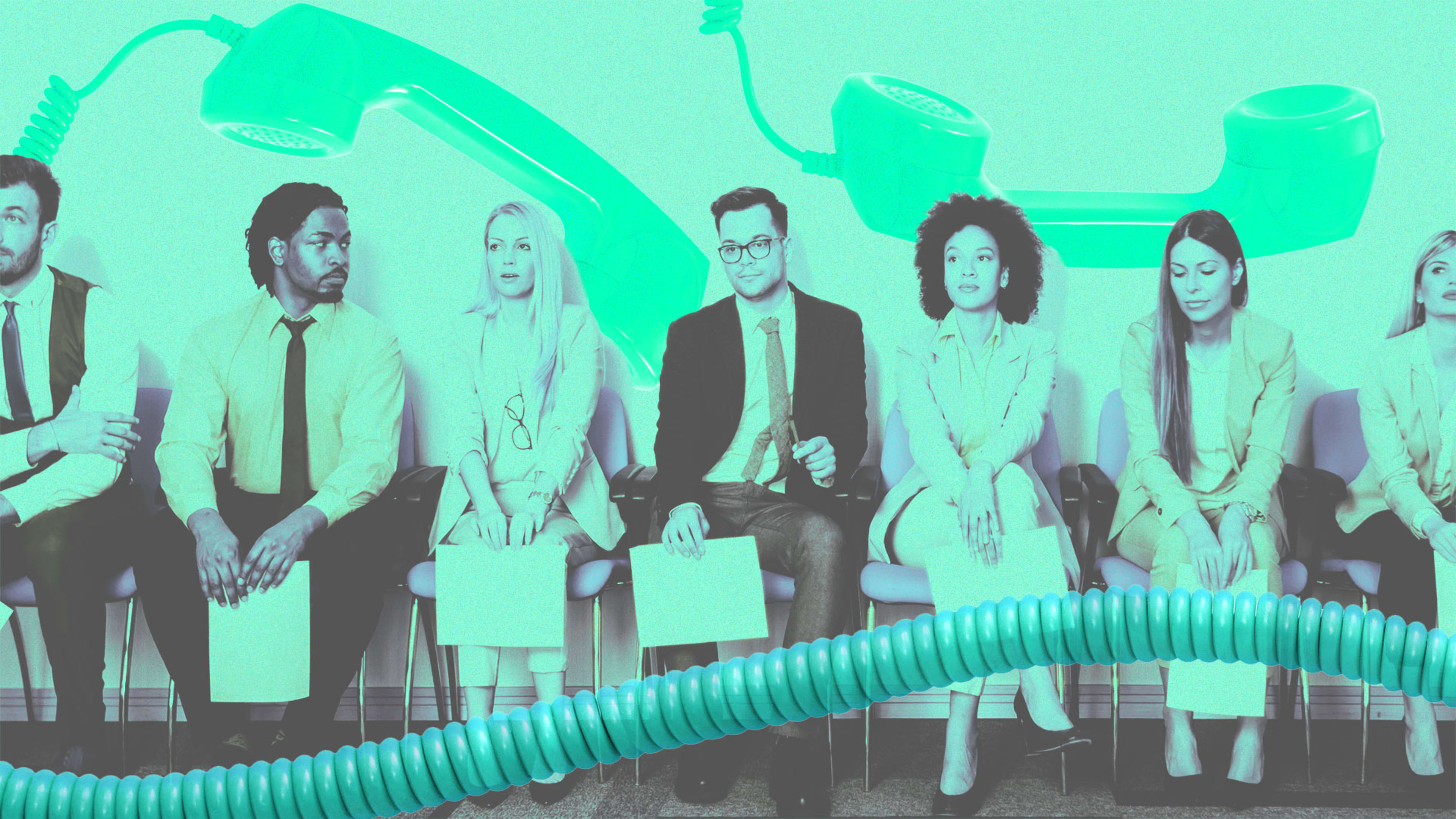All hail Zoom, the mighty little videoconferencing service that bested better known rivals like Skype, FaceTime, and Microsoft Teams to become corona-culture’s virtual meetup of choice. There’s a lot to like about Zoom—even despite nasty “Zoombombers” and frightening security holes. The software is so easy to use that even tech Luddites who cling to their landlines and clock radios seem to have little trouble logging on. Heck, even my mother uses Zoom—up until a year ago, she was sending texts on her Samsung clamshell using a QWERTY keypad. She’s among the 200 million global users who are using Zoom since the pandemic forced us all into WFH mode.
In other words, Zoom rules—that is, for everyone but hiring managers. If you’re trying to hire people right now, you should avoid videoconference job interviews in favor of regular phone calls instead. And if you’re a job hunter, it’s a good idea to gently suggest a phone call before offering to videoconference. (If an employer requests Zoom, don’t risk the interview by refusing.)
Why? Implicit bias still exists in hiring practices, but job seekers who normally employ a raft of routines designed specifically to overcome those biases are now bereft of them. Consider the 50-something technologist acutely aware that her profession too often conflates youth with creativity and innovation, and so she dyes her hair to hide the grays. Or the African American woman who relaxes her hair before big meetings because she knows how deep discrimination against “natural hairstyles” runs. But with salons closed and some products unavailable, those options aren’t possible or practical in a time of social distancing.
It’s frustrating that even in normal times, unconscious bias plays a role in hiring. While the world has changed in the past few months, hiring practices haven’t. Insidious biases can emerge during any kind of interview, whether it’s over Zoom or otherwise. But during the pandemic, when people aren’t necessarily equipped to combat this bias, it may be particularly dangerous.
However, the pandemic also presents an opportunity for companies to try to stamp out their hiring managers’ unconscious biases by asking them to just use the telephone. Studies show that so-called “blind hiring,” in which candidates are judged strictly by their skills, competence, and experience, leads to more successful hires.
There’s no shortage of evidence that implicit bias is systemic and remains a factor in hiring decisions. In 2017, the National Bureau of Economic Research studied 40,000 job applications and concluded that there was “robust evidence of hiring discrimination against older women.” Last month, PricewaterhouseCoopers agreed to change some of its recruiting practices, which targeted college campuses after a class action brought by older candidates. And just this week, the Supreme Court ruled in favor of 50-something Florida pharmacist Noris Nabb, who sued for age discrimination because she was routinely passed over for lucrative promotions in favor of younger men.
Women of color are particularly vulnerable to implicit bias based on their hair. Black hair discrimination is so pervasive that several states, including New York, New Jersey, and California, specifically outlaw it. In 2016, Chastity Jones sued an Alabama call center for effectively rescinding a job offer because she refused to cut her dreadlocks in a case that went all the way to the Supreme Court (the court declined to intervene). In a survey conducted by hair care company Shea Moisture, white women demonstrated explicit bias toward black women’s textured hair, rating it as less beautiful and less professional than smooth hair. “I wear my hair straight probably 99% of the time because, being in corporate America, I’ve seen how clients who have braids and natural hairstyles can be looked upon,” Minda Harts, who runs a career development group for women of color, told the Washington Post.
It’s not just hair that employers take note of. It’s our entire appearance, and women are routinely judged more harshly than men in that regard. A 2012 survey of 268 corporate executives that focused on elements of “executive presence” found 35% of the respondents believed “good grooming” was a contributing factor for women, while 16% said “physical attractiveness” played a role.
There’s nothing wrong with a virtual hiring process, but it is unrealistic to assume that persistent biases don’t transfer to video job interviews. Those conducted during this pandemic, when access to salon services is restricted and otherwise appearance-enhancing products like hair dye and even hair shears can be hard to come by, put some candidates at a distinct disadvantage. Like it or not, how we present ourselves can influence whether we get the job or not, and all applicants should get a fair shot.
As millions of Americans hurtle toward financial ruin, giving candidates a level playing field isn’t just smart, fair business—it’s an act of humanity. Ultimately, it’s companies’ responsibility to make sure that well-qualified candidates aren’t being passed over based on their appearance, both during the pandemic and whenever it ends. But for now, when it comes to job interviews, skip Zoom and give your candidates a call instead.
Recognize your brand’s excellence by applying to this year’s Brands That Matter Awards before the early-rate deadline, May 3.
